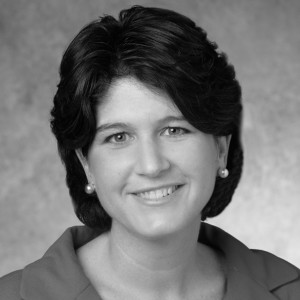THE REAL DEAL — CREW-Miami
September 18, 2009 06:30PM By Jennifer LeClaire
Defaults on commercial real estate loans are at a 15-year high. Property values are declining. The commercial mortgage-backed securities market is flailing. And the worst may be yet to come.
 Credit remains all but frozen. Some lenders are looking to diversify away from commercial real estate while others are only lending to borrowers with whom they have existing relationships — when they lend at all. And the price of capital has soared.
Credit remains all but frozen. Some lenders are looking to diversify away from commercial real estate while others are only lending to borrowers with whom they have existing relationships — when they lend at all. And the price of capital has soared.
Meanwhile, the market is yearning for a new lending instrument to replace the bundles of loans that were securitized, divided, and ultimately proved impossible to value as the market collapsed. This time last year, commercial lending experts were predicting new instruments would emerge to fill the gap. But a year after the Lehman Brothers bankruptcy, memories of toxic investment vehicles remain and experts are mixed on what happens next.
Steve Hagenbuckle, founder and managing principal of TerraCap Partners, a real estate private equity fund based in Cape Coral, doesn’t foresee any new instruments coming down the pike any time soon.
“New instrument means going back to creative lending, and creative lending means risk,” said Hagenbuckle, who also sits on the board of Landmark Bank in Ft. Lauderdale. “Right now, everybody is so gun-shy because we know the commercial market is going to continue to experience downward pressure for the foreseeable future.”
Indeed, analysts at Real Estate Economics expect the default rate for U.S. commercial property loans held by banks to peak at 5.3 percent in 2011, up from its earlier forecast of 4.8 percent. Adding insult to injury, a wave of refinancing looms.
Over the next 12 to 36 months, property values will drop dramatically and lenders will ask borrowers to cross-collateralize the property to make up the difference, Hagenbuckle said. That could lead to another wave of foreclosures.
Altogether, Foresight Analytics estimates that U.S. banks could be hit with $250 billion in commercial real estate losses, which could mean the failure of 700 more banks.
Suzanne Amaducci-Adams, a real estate partner with Bilzin Sumberg in Miami and president-elect of Commercial Real Estate Women, has a different take. She’s getting wind of a new financial instrument in the form of a hybrid securitization. The originator of the loan would keep the riskiest piece of the deal, a redistribution of risk that market observers believe will act as a brake on risky loans.
“The real problem with the securitization — the way we got into this mess — is because of the institutions that originated, underwrote and sold the loans. They had no proverbial skin in the game,” Amaducci-Adams said. “They didn’t care whether it got paid off or not. If the originators are forced to keep the riskiest piece of the loan it will force stronger due diligence and more forward-thinking.”







 See More Blogs
See More Blogs
Comments